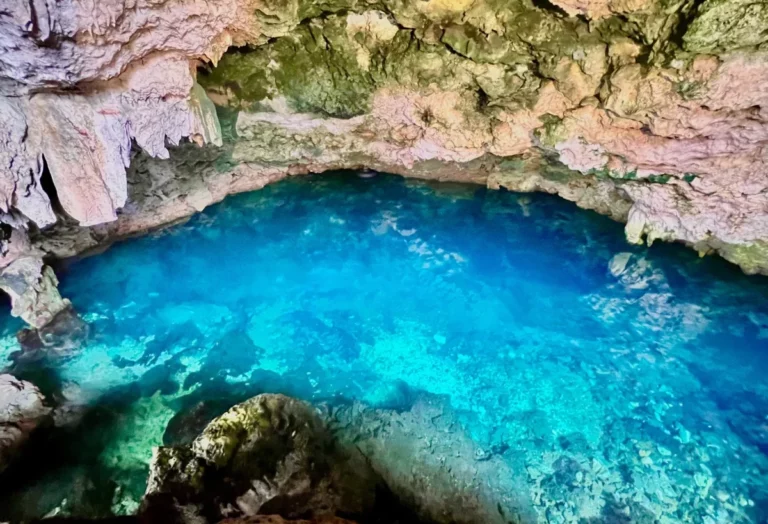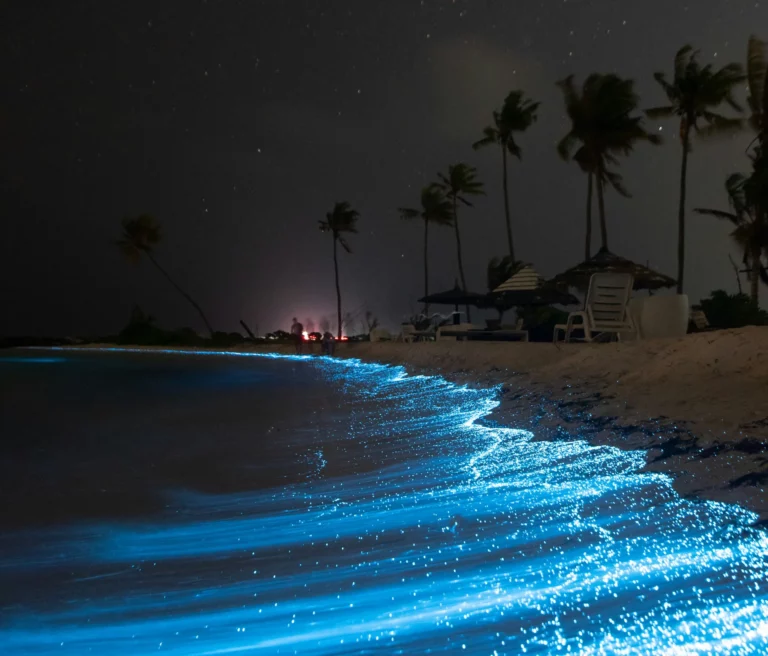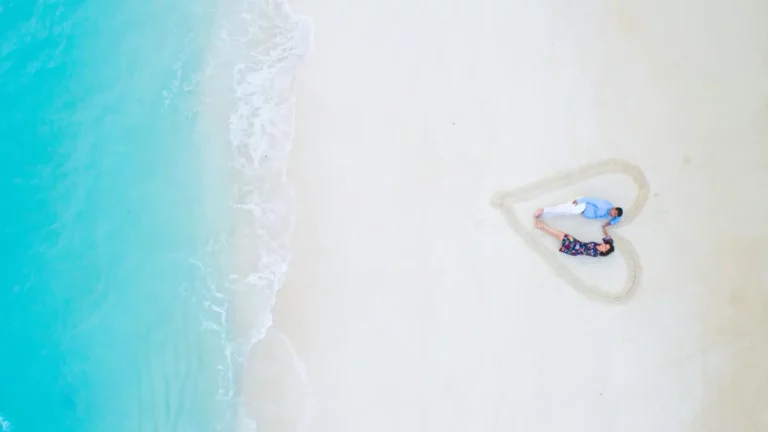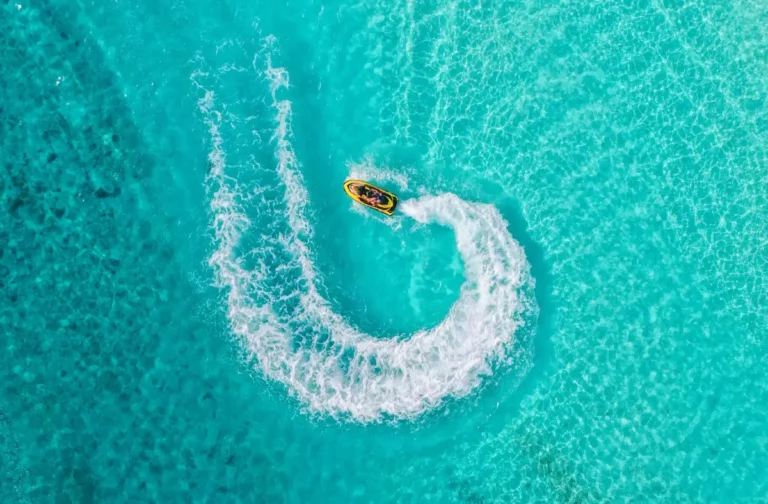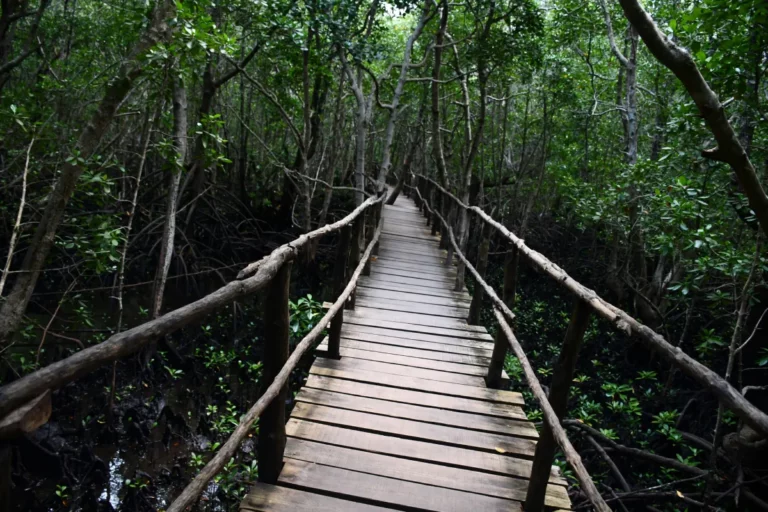Snorkeling and Diving – The Ultimate Guide to Zanzibar’s top 5 Hidden Underwater Gems
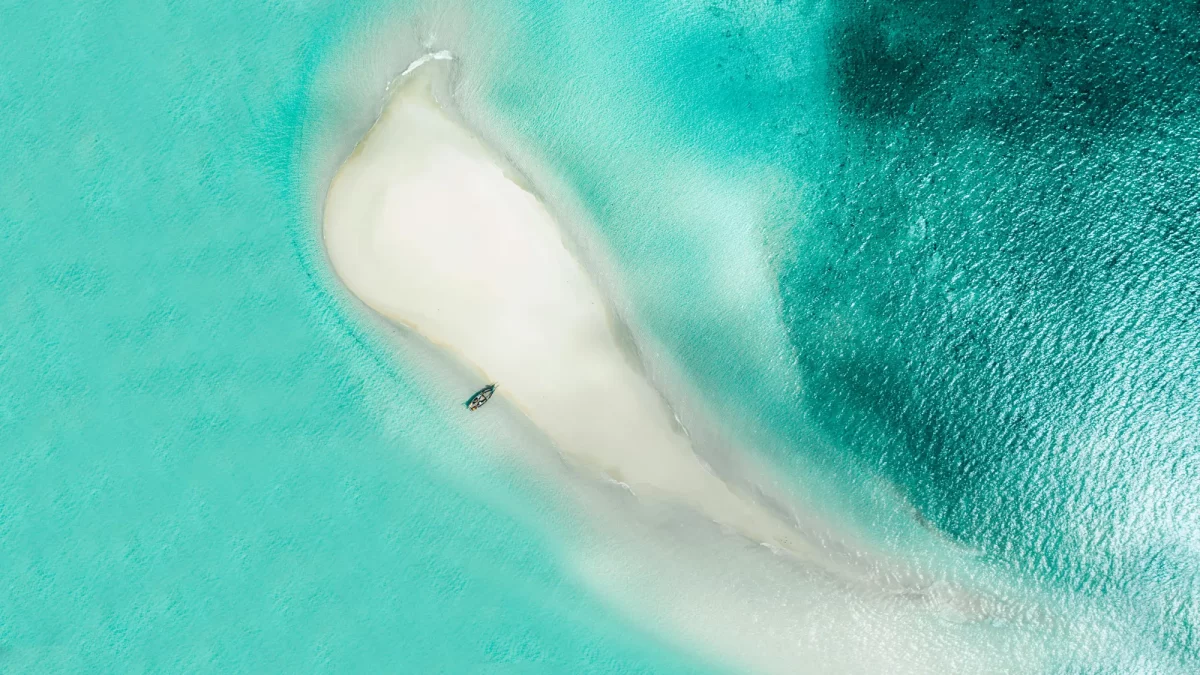
Zanzibar, located off the coast of Tanzania in East Africa, is renowned not only for its rich history and cultural heritage but also for its stunning natural beauty. Its pristine beaches, warm azure waters, and rich coral reefs have made it a renowned destination for both snorkelers and divers. The island’s underwater world is a mesmerizing blend of diverse marine life, healthy coral gardens, and crystal-clear visibility, creating the perfect environment for underwater exploration.
The island’s proximity to the Indian Ocean means it offers a variety of marine ecosystems, from shallow reefs teeming with tropical fish to deeper waters where larger marine species like dolphins and reef sharks can be spotted. Zanzibar’s reefs, particularly around the smaller islands such as Mnemba and Pemba, are some of the healthiest in the world, thanks to marine conservation efforts and their protected status. Whether you’re an experienced diver looking to dive deep into the waters around Zanzibar’s reefs or a beginner just starting to explore the wonders beneath the surface, Zanzibar has something for everyone.
The warm waters of Zanzibar, with temperatures ranging from 26°C to 30°C (79°F to 86°F), make it an ideal year-round destination for snorkeling and diving. The excellent visibility often exceeds 30 meters (98 feet), making it easy to admire the colorful coral reefs, abundant fish species, and other marine life. For beginners, there are numerous shallow dive sites and accessible beaches where you can simply float and enjoy the underwater world, while more seasoned divers can explore deeper wrecks, dramatic drop-offs, and submerged pinnacles.
Zanzibar’s appeal is further heightened by the fact that the island is not just about the beaches and resorts; its marine life includes everything from small, delicate reef fish to majestic sea turtles and manta rays. Whether you’re looking to enjoy a peaceful snorkeling experience or embark on an adventurous dive, this comprehensive guide will provide you with all the information you need, covering the best snorkeling and diving spots, key tips for beginners, and everything that makes Zanzibar a must-visit destination for underwater enthusiasts.
Table of Contents
Why Zanzibar is a Snorkeling and Diving Paradise

Zanzibar, an archipelago off the coast of Tanzania, is blessed with some of the most spectacular coral reefs and marine ecosystems in the world. The island’s warm waters, ranging from 26°C to 30°C (79°F to 86°F), make it an ideal destination for year-round diving and snorkeling. The diverse marine life includes colorful corals, exotic fish, sea turtles, and even dolphins, creating a dynamic underwater world that attracts divers from around the globe.
Zanzibar is also home to a variety of dive sites suitable for all experience levels. Beginners can enjoy shallow reef dives, while more experienced divers can explore deeper wrecks and dramatic drop-offs. The crystal-clear waters provide excellent visibility, often exceeding 30 meters (98 feet), making it easy to spot the island’s marine inhabitants.
Best Snorkeling Spots in Zanzibar
Snorkeling in Zanzibar is an unforgettable experience. The shallow, warm waters are teeming with vibrant marine life, and many of the best spots are easily accessible from the shore or by boat. Below are some of the top snorkeling locations in Zanzibar.
1. Mnemba Atoll

Mnemba Atoll is widely regarded as one of Zanzibar’s premier snorkeling and diving destinations. Located just 4 kilometers (2.5 miles) off the northeast coast of Zanzibar Island, Mnemba is a small private island surrounded by vibrant coral reefs and crystal-clear waters, making it an ideal location for underwater exploration. The Atoll is part of a protected marine conservation area, which plays a significant role in preserving the delicate ecosystem and ensuring the long-term health of its coral gardens.
Snorkelers are often enchanted by the diversity of marine life at Mnemba Atoll. The waters here are teeming with a wide variety of tropical fish, from small reef fish like damselfish and butterflyfish to larger species such as parrotfish and groupers. In addition to the rich coral gardens, visitors may also encounter larger marine animals, including dolphins, which are often spotted swimming near the shores of Mnemba. The Atoll is also a sanctuary for endangered species like the hawksbill sea turtle, and if you’re lucky, you might even have the opportunity to swim alongside these magnificent creatures.
The coral gardens surrounding Mnemba are some of the healthiest in the region, thanks to the conservation efforts that help maintain the biodiversity and prevent damage from human activity. These vibrant, protected reefs are considered some of the best for snorkeling, offering crystal-clear visibility and a wealth of marine species in shallow waters, making it particularly appealing to beginners.
Tips for Snorkelers at Mnemba Atoll:
- Ideal for beginners: The calm and clear waters around Mnemba Atoll make it a perfect spot for beginners to snorkel. The shallow reefs and easy access from boats allow for a relaxed and enjoyable underwater experience.
- Equipment: While you can rent high-quality snorkeling gear from local dive shops, it’s always a good idea to bring your own equipment for a more comfortable and hygienic experience.
- Respect the marine life: It’s crucial to respect the delicate coral ecosystem and avoid touching or disturbing the marine life. This not only ensures a safer experience but also helps preserve the environment for future generations of snorkelers and divers.
Mnemba Atoll remains one of Zanzibar’s must-visit snorkeling and diving spots, offering an unparalleled opportunity to explore one of the most pristine and biodiverse marine environments in the Indian Ocean. Whether you’re a seasoned snorkeler or a first-timer, Mnemba Atoll provides a unique and memorable underwater adventure.
2. Kendwa Reef

Located near the popular Kendwa Beach on Zanzibar’s northern coast, Kendwa Reef offers some of the island’s most accessible and rewarding snorkeling experiences. The reef is home to a diverse range of marine life, including striking lionfish, delicate butterflyfish, and colorful parrotfish. The shallow waters surrounding the reef make it an ideal spot for beginners, as snorkelers can easily reach the coral gardens directly from the beach. This proximity to shore, combined with clear waters, ensures that snorkelers can enjoy vibrant underwater scenes with minimal effort.
The waters around Kendwa Reef are renowned for their clarity and excellent visibility, often allowing snorkelers to see deep into the coral gardens, which are teeming with schools of tropical fish. In addition to the smaller reef fish, Kendwa Reef is also a great spot to encounter sea turtles, particularly around the rocky outcrops and coral ledges. The reef’s shallow depth makes it a perfect environment for these gentle creatures, and the occasional sighting of a turtle gliding through the water adds a magical touch to the snorkeling experience.
Kendwa is a popular destination, but the reef’s shallow nature makes it a convenient and rewarding spot for those looking to explore the underwater world at their own pace.
Tips for Snorkelers at Kendwa Reef:
- Easy access from the shore: The reef is close to the beach, making it an easy spot to access. You don’t need a boat to reach the best snorkeling areas, which is ideal for beginners and families.
- Respect the coral ecosystem: Stay within the designated snorkeling areas to avoid damaging the delicate coral gardens and marine life.
- Early visits for tranquility: Since Kendwa can get busy, especially in the afternoons, visiting early in the morning ensures a more peaceful and less crowded snorkeling experience, allowing you to fully enjoy the underwater beauty without distractions.
Kendwa Reef offers a fantastic opportunity to explore the colorful marine life of Zanzibar, making it a must-visit destination for both novice and experienced snorkelers. The combination of easy access, vibrant marine life, and clear waters makes it one of the island’s top spots for underwater adventures.
3. Tumbatu Island
Tumbatu Island, located off the northwest coast of Zanzibar, is one of the island’s lesser-known treasures but offers an equally impressive snorkeling experience compared to more popular sites like Mnemba Atoll. The island is famous for its pristine coral reefs, which are home to a diverse array of marine life. Snorkelers here can expect to see large schools of tropical fish, vibrant sea anemones, and, if lucky, even dolphins swimming gracefully in the crystal-clear waters.
The shallow waters around Tumbatu Island make it an ideal spot for snorkeling. In some areas, the depth is just a few meters, allowing snorkelers to easily explore the colorful reefs and encounter a wide variety of marine species. The reef is home to both hard and soft corals, creating a visually stunning underwater landscape. The diversity of marine life, combined with the reef’s healthy condition, makes it a perfect spot for those seeking a peaceful, immersive snorkeling experience.
What makes Tumbatu particularly appealing is its quiet and serene atmosphere. Unlike the more crowded areas around Zanzibar, Tumbatu remains a relatively secluded spot, offering an escape from the hustle and bustle of more tourist-heavy locations. This makes it ideal for travelers who prefer to enjoy nature in a more tranquil and undisturbed setting.
Tips for Snorkelers at Tumbatu Island:
- Quieter Location: Tumbatu Island is less visited than other snorkeling hotspots, making it perfect for those looking to avoid crowds and enjoy a more peaceful experience.
- Capture the Beauty: Bring a waterproof camera to capture the incredible underwater scenery. The coral gardens and diverse marine life provide ample opportunities for stunning photographs.
- Respect the Local Community: Tumbatu Island is home to a local community, and it’s important to respect their customs and the environment. Avoid touching or disturbing the coral, and always follow the guidelines set by local authorities to preserve the area’s natural beauty.
Tumbatu Island offers a more tranquil alternative for snorkelers looking to experience the natural beauty of Zanzibar’s marine life. Its unspoiled reefs and serene atmosphere make it a must-visit destination for those seeking an authentic and peaceful underwater adventure.
4. Chumbe Island

Chumbe Island, located just off the southwest coast of Zanzibar, is a hidden gem and one of the region’s top destinations for both snorkeling and diving. As part of a protected marine park, the island offers a pristine and well-preserved coral reef ecosystem, which is home to an abundance of marine life. The clear waters surrounding the island are teeming with diverse fish species, sea turtles, and the occasional reef shark, making it an ideal spot for those looking to experience a truly vibrant underwater world.
Chumbe Island is particularly renowned for its marine conservation efforts. As one of the first marine protected areas in East Africa, the island plays a critical role in preserving coral reefs, fish populations, and other marine organisms. The conservation initiatives on the island make it an excellent choice for eco-conscious travelers who want to experience nature while supporting sustainable tourism practices. The island’s crystal-clear waters, coupled with its vibrant coral gardens, provide an exceptional environment for snorkelers and divers alike, offering some of the most spectacular underwater exploration opportunities in Zanzibar.
With its relatively untouched marine environment, Chumbe Island is a must-visit for those seeking an eco-friendly and immersive snorkeling experience.
Tips for Snorkelers at Chumbe Island:
- Accommodation: Chumbe Island has a small eco-lodge offering limited accommodations. If you wish to stay overnight, it’s highly recommended to book in advance, as the island is often in high demand due to its unique eco-lodge and conservation status.
- Depth and Experience: The waters around Chumbe Island can be slightly deeper than other snorkeling spots, so it’s ideal for those with some prior snorkeling experience. However, the shallow areas are still accessible for beginners, making it a great spot for all levels of experience.
- Conservation guidelines: Chumbe Island is dedicated to protecting its fragile ecosystem. It’s essential to follow all marine conservation guidelines, such as avoiding contact with coral and not disturbing the marine life, to help preserve this pristine environment for future visitors.
Chumbe Island remains one of Zanzibar’s most remarkable snorkeling and diving spots, combining natural beauty, rich marine life, and a commitment to conservation. For those seeking an eco-friendly adventure in Zanzibar, Chumbe Island offers a truly unforgettable experience.
Best Diving Spots in Zanzibar
For divers, Zanzibar offers a range of dive sites, from shallow coral gardens to deep wrecks and drop-offs. Whether you’re a seasoned diver or a beginner, there’s something for everyone. Here are some of the top diving locations in Zanzibar.
1. The Zanzibar Wreck
The Zanzibar Wreck, located off the east coast of the island, is one of the most exciting dive sites in Zanzibar. This dive site features a sunken shipwreck that attracts both novice and advanced divers. The wreck is surrounded by vibrant coral formations and is home to an array of marine life, including moray eels, lionfish, and groupers.
The wreck is situated at a depth of around 18 to 30 meters (59 to 98 feet), making it suitable for advanced divers. However, the wreck’s location and marine life make it an unforgettable dive experience.
Tips for Divers at the Zanzibar Wreck:
- This site requires advanced diving certification due to its depth.
- Always dive with a licensed guide who is familiar with the site.
- Bring a torch to explore the interior of the wreck.
2. Pemba Island
Pemba Island, located to the north of Zanzibar, is one of East Africa’s hidden gems and is often considered one of the best diving destinations in the Indian Ocean. Unlike Zanzibar, which is more widely known, Pemba remains relatively untouched by mass tourism, making it a perfect destination for those looking for a quieter, more serene diving experience. The island is renowned for its dramatic underwater landscapes, which include steep drop-offs, vibrant coral gardens, and submerged pinnacles that rise from the ocean floor. These features provide a stunning and varied environment for divers of all levels, although the deeper dive sites are better suited for experienced divers.
The waters around Pemba are some of the clearest in the region, often offering visibility that exceeds 40 meters (131 feet). This exceptional clarity allows divers to fully appreciate the incredible marine life, with its vast array of colorful fish species and corals. The island is home to an array of pelagic fish, including manta rays, barracudas, and tuna, as well as a variety of reef fish, such as butterflyfish, lionfish, and snappers. The healthy coral reefs are teeming with life, providing a spectacular backdrop for underwater exploration.
Pemba’s dive sites, such as those around Misali Island and the deep walls off the western coast, offer advanced divers the opportunity to explore pristine, untouched reefs. These sites feature vertical walls, strong currents, and the chance to encounter large schools of fish, as well as exciting pelagic species that thrive in these deeper waters.
Tips for Divers at Pemba Island:
- Best suited for experienced divers: Due to the depth of the dive sites and strong currents, Pemba is better suited for divers who are already experienced with open water diving and comfortable with deeper and more challenging conditions.
- Remote location with fewer crowds: The island’s relatively remote location ensures that divers can enjoy a more tranquil experience, away from the crowds that can sometimes be found at other popular diving destinations in the region. This seclusion adds to the appeal of Pemba for those seeking an exclusive, undisturbed diving experience.
- Equipment: Given Pemba’s remote nature, it’s recommended that divers bring their own equipment, although reputable dive shops on the island offer rental options. Ensure that your gear is in excellent condition, as diving here requires equipment that can handle deeper and sometimes more challenging conditions.
Pemba Island’s combination of stunning underwater landscapes, pristine reefs, and diverse marine life make it a must-visit destination for advanced divers. Its remote location ensures that it remains one of the Indian Ocean’s best-kept secrets, offering an unparalleled diving experience away from the crowds.
3. Leven Bank
Leven Bank, located about 20 kilometers (12 miles) off the coast of Zanzibar, is a submerged reef that attracts both divers and snorkelers. This deep-water dive site is known for its impressive coral formations, crystal-clear waters, and large marine life. Divers can expect to see sharks, rays, and schools of fish, including large jacks and snappers.
Leven Bank is a dive site for experienced divers, as it requires deep dives and careful navigation of the underwater current. However, its rich marine life and stunning coral formations make it one of Zanzibar’s most thrilling dive sites.
Tips for Divers at Leven Bank:
- This site is only accessible by boat, so it’s important to plan your trip with a reliable dive operator.
- Due to its depth and currents, only experienced divers should attempt this dive.
- Bring a camera to capture the stunning underwater landscapes.
4. Coral Garden
Located off the coast of Nungwi, the Coral Garden is a great spot for both snorkeling and diving. This site features a shallow reef with healthy coral formations and an abundance of marine life. The site is suitable for beginners and experienced divers alike, as it offers both shallow and deeper sections.
Diving at Coral Garden allows divers to explore a variety of underwater environments, including coral gardens, small caves, and swim-throughs. Expect to see a wide range of fish, including butterflyfish, parrotfish, and surgeonfish.
Tips for Divers at Coral Garden:
- This site is ideal for divers with various skill levels, including beginners.
- Stay within the designated boundaries to protect the coral and marine life.
- Dive with a certified guide to ensure safety and an enjoyable experience.
Tips for Beginners

If you’re new to snorkeling or diving, Zanzibar is an excellent place to get started. Here are some tips to help you make the most of your underwater adventures.
1. Take a Course
If you’re new to diving, it’s essential to take a course with a certified diving school. PADI (Professional Association of Diving Instructors) offers beginner courses, such as the Discover Scuba Diving program, which allows you to experience diving in a safe and controlled environment.
2. Choose the Right Equipment
Ensure you have the right equipment for your activity. For snorkeling, a mask, snorkel, and fins are essential. For diving, a full set of diving equipment, including a wetsuit, BCD (Buoyancy Control Device), regulator, and dive tank, is necessary. Many dive shops in Zanzibar offer equipment rentals, so you don’t need to bring your own unless you prefer.
3. Stay Safe
Always follow the safety guidelines provided by your instructor or guide. For both snorkeling and diving, it’s important to never touch or disturb marine life, as this can harm the ecosystem and put you at risk.
4. Be Aware of the Weather and Tides
The best time to snorkel or dive in Zanzibar is during the dry season, from June to October. Be sure to check the weather forecast and tides before your trip, as some dive sites may be affected by strong currents or rough seas during certain conditions.
Conclusion
Zanzibar’s underwater world is nothing short of magical. Whether you’re snorkeling in the shallow waters of Mnemba Atoll or diving in the deeper, more challenging sites around Pemba Island, there’s something for everyone. With its clear waters, diverse marine life, and abundant coral reefs, Zanzibar is a top destination for both beginners and experienced divers alike. By following the tips and exploring the best snorkeling and diving spots, you’ll be sure to have an unforgettable underwater adventure in this stunning paradise.
Remember, the key to an enjoyable and safe snorkeling or diving experience is preparation. Take a course, bring the right equipment, and always respect the marine environment. Happy exploring!

